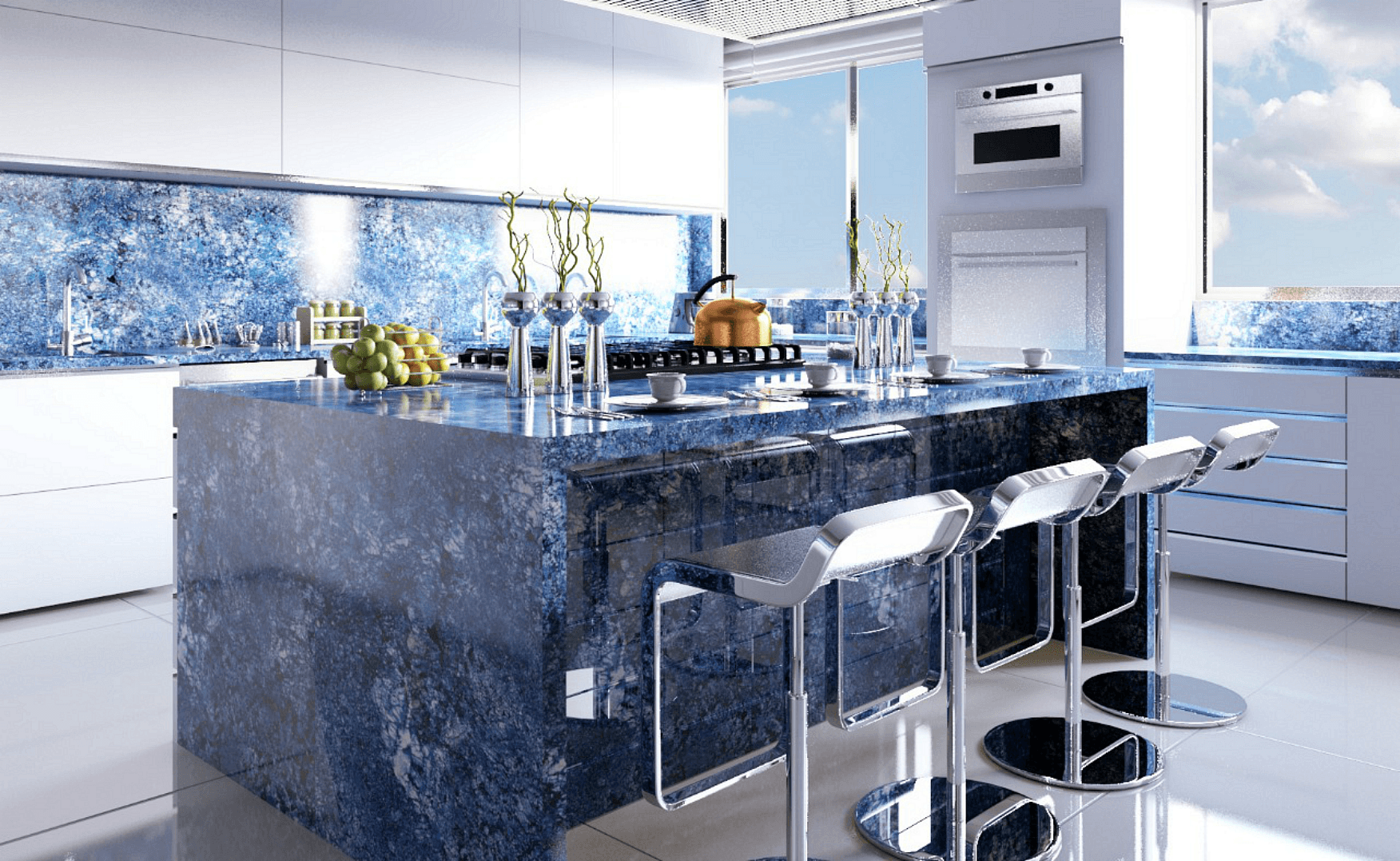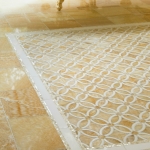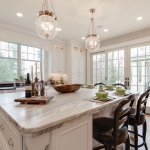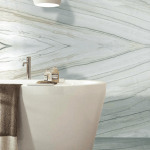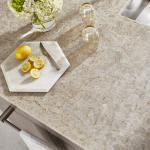Natural Stone has an Incredible Story to Tell, and Now is the Time to Start Telling It
We know that the number one source for information about building products is the Internet. Consumers, designers and architects often conduct online research before contacting or visiting natural stone suppliers. As the market expands, the Internet has become host to an array of articles touting the benefits of new and/or alternative building materials (quartz, concrete, recycled glass, wood, etc.). In the rush to inform audiences about these new products, many online outlets have begun predicting the demise of natural stone – glossing over the good things about stone in order to spread myths and misconceptions.
Noticing this trend, the stone industry asked a question: What would happen if we came together to proactively promote the use of natural stone? The Natural Stone Promotional Campaign, and with it, www.usenaturalstone.com, was formed as an answer to this question.
On this website, you will find articles and images that all serve the same purpose: to answer the question of “Why Use Natural Stone?” You will learn the benefits of using natural stone in a variety of applications: interior and exterior, residential and commercial. You will discover what makes stone unique, both from technical and stylistic points of view. You will also learn what the stone industry is doing to ensure sustainability and best practices.
We believe that natural stone has an incredible story to tell, and now is the time to start telling it!
Stone Facts
Common Stone Types & Technical Stone Research Results
The following information has been reproduced with permission from the Natural Stone Council website (www.genuinestone.com).
Granite
The only natural stones harder than granite are diamonds, rubies, and sapphires. Therefore, choose granite when permanence, enduring color and texture, and complete freedom from deterioration and maintenance are prime requirements. Granite is highly heat, scratch and stain resistant, and is commonly used to face commercial and institutional buildings and monuments. It is unequaled as a material for fireplaces, steps, road and driveway curbing, terraces, and to pave plazas and public spaces. Granite is the traditional favorite of countertop materials for its unique colors and patterns, proven durability and lasting value.
Granite comes in hundreds of different colors and is quarried in such places as the United States, Canada, Brazil, China, Africa, Norway, India, Argentina, Portugal, Italy, Finland, Russia, Spain, Saudi Arabia, and more.
For more information on Granite, visit the National Building Granite Quarries Association website at www.nbgqa.com.
Limestone
This grain stone has a very uniform texture and grade, and has gained worldwide acceptance as a premier dimension stone. Limestone weathers naturally over time and its color mellows and blends into a pleasing natural patina. With no artificial coloring agents to fade and no reinforcement rods to rust, the appearance of limestone actually improves with age.
Limestone exhibits no preferential direction of splitting and can be cut and carved in a wide variety of shapes and sizes. Thus, it can be sawed, planed, turned on a lathe or hand worked to match the requirements of demanding architectural designs. Limestone has proven its use from simple treads and pavers to landscaping structures and bridges, to soaring cathedrals over and over again.
One benefit that has made limestone a choice product is the consistency of deposit. While subtle color and grain differences are present, limestone is extremely homogenous for a natural product. This is important, not only for the current project being built, but particularly when future expansions are contemplated.
For more information on Limestone, visit the Indiana Limestone Institute website at www.iliai.com.
Marble
Most people are familiar with marble. From Greek statues to Roman baths, it has been used for centuries in just about every possible interior and exterior application. Marble is relatively hard, but not as hard as granite. Marble basically classifies into four groups which include: Groups A, B, C, and D. These classifications merely indicate fabrication ability, which is based on the material’s level of hardness. It is very popular for fireplaces, bar-tops, and bathrooms, and comes in a wide range of colors.
Marble has the same general properties of limestone and can stain, etch or scratch, but only becomes more beautiful over time and use. Most marble has veining mineral deposits throughout. It is generally thought to be from Italy, but in actuality it is quarried all over the world. Tumbled marble has become extremely popular in the United States in the last few years for backsplash, flooring and shower areas.
For more information on Marble, visit www.naturalstoneinstitute.org.
Sandstone
Composed mainly of sand-size mineral or rock grains, most sandstone is composed of quartz and feldspar – two of the most common minerals in the earth’s crust. Like sand, it can be any color, but most commonly comes in tan, brown, yellow, red, gray and white.
The stone generally has a uniform texture and it is somewhat soft, making it user-friendly for a variety of applications. It is favored for wall claddings and flooring because of its low absorption rate, high compression strength, and aesthetically pleasing appearance.
For more information on Sandstone, visit www.naturalstoneinstitute.org.
Slate
Slate is a metamorphic rock that is dense, strong, acid resistant and non-absorptive. It is impervious to freeze/ thaw cycles and has been used in construction for thousands of years. It is the material of choice for discerning architects, designers, contractors and builders.
Slate produced in North America comes in a variety of colors, including black, gray, green, purple and red. Many of these slates are available with mottling of more than one color and some of these slates include a color weathering characteristic which adds warm earth tone hues.
Most commonly used for interior floor surfaces or exterior landscaping, slate also serves as a durable and stain resistant counter top, beautiful pool coping, shower enclosure, pavers, building cladding, and spectacular fireproof roof covering that can last the life of the building.
For more information on Slate, visit the National Slate Association website at www.slateassociation.org.
Why Choose Natural Stone?
Natural stone is held in high regard as a premier building material because it reflects unique character, stability, and grandeur. Variations in natural stone’s broad range of color, pattern and texture are visually interesting and impossible to replicate. And, because it comes from the earth, from eco-friendly compositions, it is a natural choice.
Variety. The diversity of natural stone products encourages limitless design potential. Aesthetically, what you do with stone is as varied as your imagination. Its many factors in the way stone formed within the Earth contribute to its varieties and enhance the creativity it provides – something that cannot be duplicated in a laboratory or come from a mold.
Durability. Natural stone exhibits a durability not found in other building materials. There is an emotional connection to buildings and monuments built in stone that carries a great deal of meaning due to enduring history and a legacy of mankind through the ages.
Green Attributes. Natural stone products like those created in granite, marble, limestone, slate and sandstone, among others possess innate characteristics that contribute toward LEED (Leadership in Energy and Environmental Design) or LEED intended construction. Consider stone’s low embodied energy, ready availability as a naturally occurring material – often locally (within a 500 mile radius of the project), no off-gases to impair indoor air quality, high thermal capacitance, and exceptional durability for low maintenance and structural permanence. Using natural stone for your projects shows that you care about the environment and consciously strive to preserve it.
Unique. Design projects should stand out and reflect the passion, taste and personality of the designer. Natural stone is a one-of-a-kind building material that sets you apart from others because it can’t be mimicked, manufactured or faked.
Value. The value in natural stone is more than a monetary measure. It involves longevity, ease of maintenance, permanence and stability that far exceed the initial investment. Utilizing natural stone is now more affordable than ever due to advancing stone quarrying and processing technology that has improved efficiency over the years. New automated machinery allows fabricators to cut natural stone thinner, faster, more consistently and at less cost than in the past. Development of anchoring technologies and systems make installation easier, quicker and more secure. In addition, natural stone is simple to care for, has an appearance that literally improves with age, and can last a lifetime.
Natural Stone and Sustainability
The most significant and exciting development in the construction industry over the past few decades has been green, sustainable building. In 1998, the U.S. Green Building Council (USGBC) – the nation’s leading coalition on sustainable building – established the LEED® Green Building Rating System™. LEED is the most widely used rating system for green building. This system defines standards for environmentally responsible, healthier and more profitable structures, and awards points to new construction and major renovation projects in five categories:
- Sustainable Sites
- Water Efficiency
- Energy & Atmosphere
- Materials & Resources
LEED v4 will take a more holistic approach to defining a green building material with a particular focus on lifecycle impacts in addition to supply chain management – taking the program’s scope one step deeper into the manufacturing process. This change is expected to influence the information that designers and architects request from manufacturers.
Architects are requiring more rigorous information from manufacturers, by requesting them to collect information outside of their localized manufacturing process.
In the past, self-declared recycled content and bare-bones regional declarations were enough to meet credit requirements. Now, green building programs like LEED and the International Living Future’s Living Building Challenge are redefining what makes a material sustainable. Less emphasis is being put on the product’s individual attributes. This is a sweet spot for the stone industry and its materials.
Why Build Green?
Constructing buildings in an environmentally considerate way requires careful thought and planning. However, the payback from a green building far outweighs this price. Conventional building practices consume large quantities of energy and water, while generating excessive air emissions and waste streams. These impacts are also caused by product manufacturing. Moreover, indoor air quality can be impaired when unhealthy building materials are employed.
Implementing green building techniques reduces impacts on the environment and human health during both construction and operation of a structure, as well as during production of building materials. If this harm is not reason enough to build responsibly, consider the financial aspect. Resource consumption and medical care can become expensive for the builder, the material manufacturer and the employer of those working in a structure.
About the Natural Stone Institute:
The Natural Stone Institute serves more than 1,900 members in 55 countries who represent every aspect of the natural stone industry, offering a wide array of technical and training resources, professional development, regulatory advocacy and networking events. Two prominent publications – the Dimension Stone Design Manual and Building Stone Magazine – raise awareness in both the industry and the design community for the promotion and best use of natural stone. Learn more at www.usenaturalstone.com.
###
For more information contact:
Kat Bowley
kbowley@kleberandassociates.com
#gallery-0 {
margin: auto;
}
#gallery-0 .gallery-item {
float: left;
margin-top: 10px;
text-align: center;
width: 100%;
}
#gallery-0 img {
border: 2px solid #cfcfcf;
}
#gallery-0 .gallery-caption {
margin-left: 0;
}
#gallery-5 {
margin: auto;
}
#gallery-5 .gallery-item {
float: left;
margin-top: 10px;
text-align: center;
width: 33%;
}
#gallery-5 img {
border: 2px solid #cfcfcf;
}
#gallery-5 .gallery-caption {
margin-left: 0;
}
/* see gallery_shortcode() in wp-includes/media.php */
- Blue Agata granite from Brasigran
- Pacific Honey onyx from Artistic Tile
- Mont Blanc honed quartzite from Stoneshop
- Bookmatched natural stone from Decolores Marmores e Granitos
- Ice Flakes quartzite from M S International

